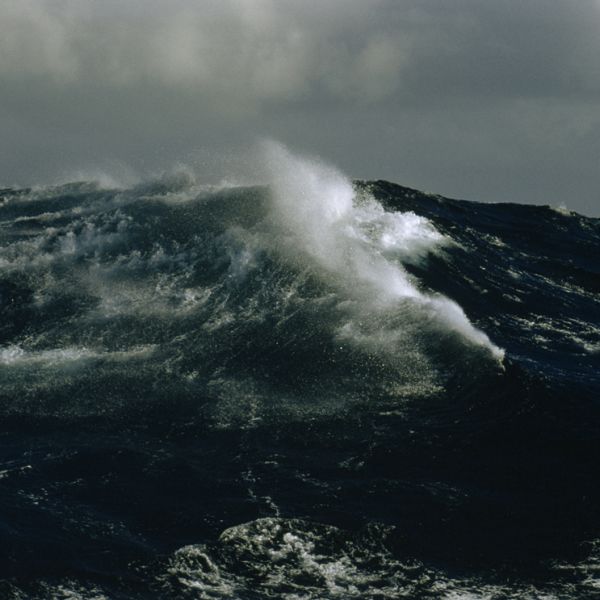El Niño

El Niño is a climate pattern that describes the unusual warming of surface waters in the eastern tropical Pacific Ocean. El Niño is the “warm phase” of a larger phenomenon called the El Niño-Southern Oscillation (ENSO). La Niña, the “cool phase” of ENSO, is a pattern that describes the unusual cooling of the region’s surface waters. El Niño and La Niña are considered the ocean part of ENSO, while the Southern Oscillation is its atmospheric changes.
El Niño has an impact on ocean temperatures, the speed and strength of ocean currents, the health of coastal fisheries, and local weather from Australia to South America and beyond. El Niño events occur irregularly at two- to seven-year intervals. However, El Niño is not a regular cycle, or predictable in the sense that ocean tides are.
El Niño was recognized by fishers off the coast of Peru as the appearance of unusually warm water. We have no real record of what indigenous Peruvians called the phenomenon, but Spanish immigrants called it El Niño, meaning “the little boy” in Spanish. When capitalized, El Niño means the Christ Child, and was used because the phenomenon often arrived around Christmas. El Niño soon came to describe irregular and intense climate changes rather than just the warming of coastal surface waters.
Led by the work of Sir Gilbert Walker in the 1930s, climatologists determined that El Niño occurs simultaneously with the Southern Oscillation. The Southern Oscillation is a change in air pressure over the tropical Pacific Ocean. When coastal waters become warmer in the eastern tropical Pacific (El Niño), the atmospheric pressure above the ocean decreases. Climatologists define these linked phenomena as El Niño-Southern Oscillation (ENSO). Today, most scientists use the terms El Niño and ENSO interchangeably.
Scientists use the Oceanic Nino Index (ONI) to measure deviations from normal sea-surface temperatures. El Niño events are indicated by sea surface temperature increases of more than 0.9° Fahrenheit for at least five successive three-month seasons. The intensity of El Niño events varies from weak temperature increases (about 4–5° F) with only moderate local effects on weather and climate to very strong increases (14–18° F) associated with worldwide climatic changes.
Upwelling
In order to understand the development of El Niño, it’s important to be familiar with non-El Niño conditions in the Pacific Ocean. Normally, strong trade winds blow westward across the tropical Pacific, the region of the Pacific Ocean located between the Tropic of Cancer and the Tropic of Capricorn. These winds push warm surface water toward the western Pacific, where it borders Asia and Australia.
Due to the warm trade winds, the sea surface is normally about 0.5 meter (1.5 feet) higher and 7.2° C (12.96° F) warmer in Indonesia than Ecuador. The westward movement of warmer waters causes cooler waters to rise up toward the surface on the coasts of Ecuador, Peru, and Chile. This process is known as upwelling.
Upwelling elevates cold, nutrient-rich water to the euphotic zone, the upper layer of the ocean. Nutrients in the cold water include nitrates and phosphates. Tiny organisms called phytoplankton use them for photosynthesis, the process that creates chemical energy from sunlight. Other organisms, such as clams, eat the plankton, while predators like fish or marine mammals prey on clams.
Upwelling provides food for a wide variety of marine life, including most major fisheries. Fishing is one of the primary industries of Peru, Ecuador, and Chile. Some of the fisheries include anchovy, sardine, mackerel, shrimp, tuna, and hake.
The upwelling process also influences global climate. The warm ocean temperature in the western Pacific contributes to increased rainfall around the islands of Indonesia and New Guinea. The air influenced by the cool eastern Pacific, along the coast of South America, remains relatively dry.
El Niño Events
El Niño events are defined by their wide-ranging teleconnections. Teleconnections are large-scale, long-lasting climate anomalies or patterns that are related to each other and can affect much of the globe.
During an El Niño event, westward-blowing trade winds weaken along the Equator. These changes in air pressure and wind speed cause warm surface water to move eastward along the Equator, from the western Pacific to the coast of northern South America.
These warm surface waters deepen the thermocline, the level of ocean depth that separates warm surface water from the colder water below. During an El Niño event, the thermocline can dip as far as 152 meters (500 feet).
This thick layer of warm water does not allow normal upwelling to occur. Without an upwelling of nutrient-rich cold water, the euphotic zone of the eastern Pacific can no longer support its normally productive coastal ecosystem. Fish populations die or migrate. El Niño has a devastating impact on Ecuadorian and Peruvian economies.
El Niño also produces widespread and sometimes severe changes in the climate. Convection above warmer surface waters bring increased precipitation. Rainfall increases drastically in Ecuador and northern Peru, contributing to coastal flooding and erosion. Rains and floods may destroy homes, schools, hospitals, and businesses. They also limit transportation and destroy crops.
As El Niño brings rain to South America, it brings droughts to Indonesia and Australia. These droughts threaten the region’s water supplies, as reservoirs dry and rivers carry less water. Agriculture, which depends on water for irrigation, is threatened.
Stronger El Niño events also disrupt global atmospheric circulation. Global atmospheric circulation is the large-scale movement of air that helps distribute thermal energy (heat) across the surface of Earth. The eastward movement of oceanic and atmospheric heat sources cause unusually severe winter weather at the higher latitudes of North and South America. Regions as far north as the U.S. states of California and Washington may experience longer, colder winters because of El Niño.
El Niño events of 1982-83 and 1997-98 were the most intense of the 20th century. During the 1982-83 event, sea-surface temperatures in the eastern tropical Pacific were 7.8-12.8° C (9-18° F) above normal. These strong temperature increases caused severe climatic changes: Australia experienced harsh drought conditions; typhoons occurred in Tahiti; and record rainfall and flooding hit central Chile. The west coast of North America was unusually stormy during the winter season, and fish catches were dramatically reduced from Chile to the U.S. state of Alaska.
The El Niño event of 1997-98 was the first El Niño event to be scientifically monitored from beginning to end. The 1997-98 event produced drought conditions in Indonesia, Malaysia, and the Philippines. Peru experienced very heavy rains and severe flooding. In the United States, increased winter rainfall hit California, while the Midwest experienced record-breaking warm temperatures during a period known as “the year without a winter.”
El Niño-related disruption of global atmospheric circulation extends beyond Pacific Rim nations. Strong El Niño events contribute to weaker monsoons in India and Southeast Asia. ENSO has even contributed to increased rainfall during the rainy season in sub-Saharan Africa.
Diseases thrive in communities devastated by natural hazards such as flood or drought. El Niño-related flooding is associated with increases in cholera, dengue, and malaria in some parts of the world, while drought can lead to wildfires that produce respiratory problems.
‘Flavors’ of El Niño
Variations of El Niño are referred to as “flavors.” The transition period of an El Niño event, for instance, is called a “Trans Niño.” Trans Niño events occur at the onset and closing of an El Niño event. Trans Niño events often include increased tornado activity in the American Midwest.
Another “flavor” of El Niño is the El Niño Modoki, or Modoki Niño. Modoki is a Japanese word meaning “similar, but different.” Modoki Niño, also called the Central Pacific Niño, is characterized by changes in sea-surface temperatures in the central, not eastern, Pacific. Some Modoki Niño events are distinct from traditional El Niño events, such as increased hurricane activity in the Atlantic and Gulf of Mexico. Many meteorologists are critical of the Modoki Niño, calling for more climate models to study the proposed phenomenon.
Monitoring El Niño
Scientists, governments, and nongovernmental organizations (NGOs) collect data about El Niño using a number of technologies. The National Oceanic and Atmospheric Administration (NOAA), for instance, operates a network of scientific buoys. These buoys measure ocean and air temperatures, currents, winds, and humidity. The buoys are located at about 70 locations in the southern Pacific Ocean, from the Galapagos Islands to Australia.
These buoys transmit data daily to researchers and forecasters around the world. Using data from the buoys, along with visual imagery they receive from satellite imagery, scientists are able to more accurately predict El Niño and visualize its development and impact around the globe.




